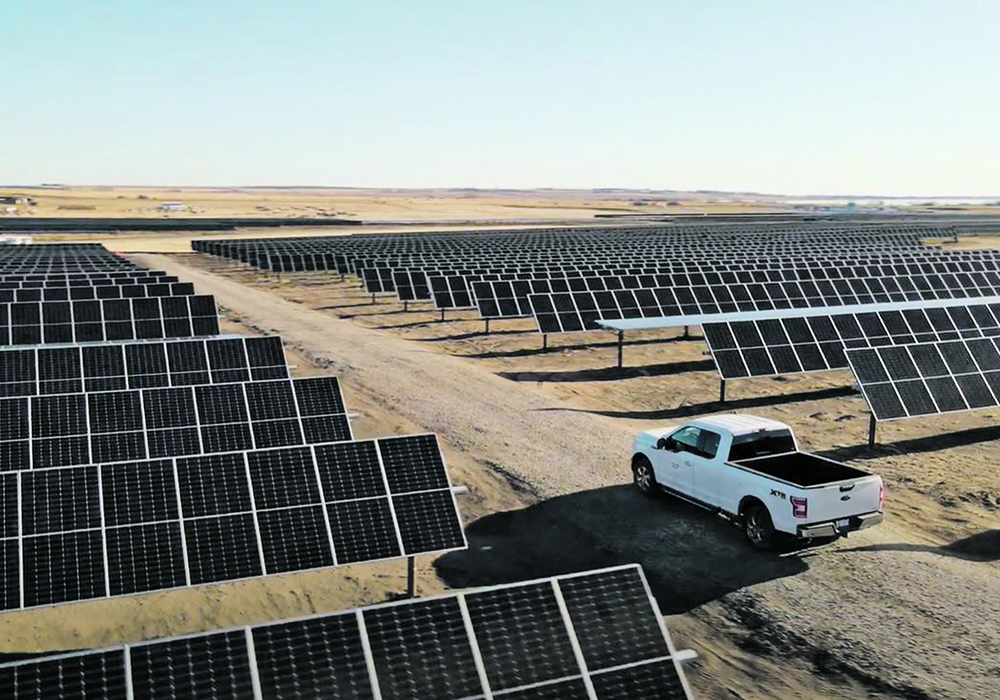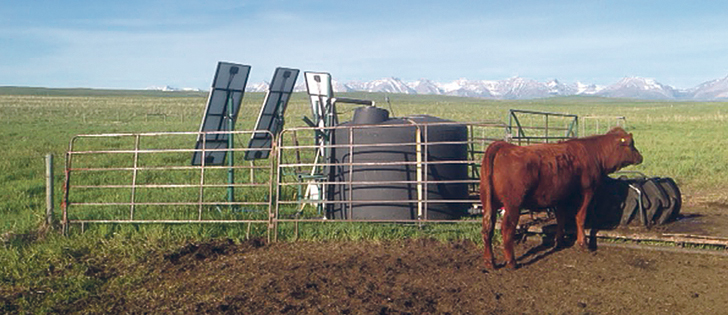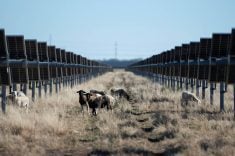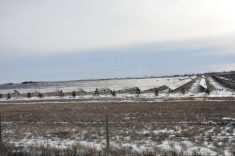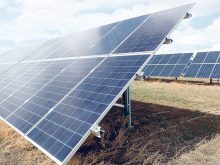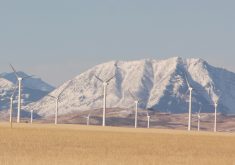Halkirk, Alta. — When it comes to ranching, Jenna and Brett Hauck sometimes feel like they’re the odd couple out.
Unlike most cow-calf operations, they use solar power to run their farm near Halkirk and try to keep their animals out of the feedlot as much as possible during winter.
“It’s really thinking back to when the buffalo were on the Prairies,” Jenna said.
“They were these big mobs when grazing, and then would let the land rest before they came back. So, if we’re constantly on the land, and constantly using it, how is it going to regenerate itself?”
Read Also

Beef check-off collection system aligns across the country
A single and aligned check-off collection system based on where producers live makes the system equal said Chad Ross, Saskatchewan Cattle Association chair.
The Haucks were part of a farm tour Sept. 6, where other farmers, city-dwellers and people in the industry visited them.
The tour focused on current and future energy production in east-central Alberta, with topics like climate change and the economy.
The couple’s operation is distinctly different than many others across the Prairies but the Haucks are among a growing number of cattle producers who are introducing what they call sustainable and holistic methods.
“You could say we’re alternative, in a way,” Brett said. “But there are a lot of good examples of what people are doing in Alberta, and across the world.”
During the tour, the couple showed spectators their solar-powered electrical system installed on one of their buildings.
The $24,000 system features 38 panels, produces 12,000 kilowatt hours annually and is attached to the grid.
However, the panels normally feed electricity to the grid during the summer.
For every kilowatt hour they send to the power company, they receive a credit on their bill. The credit is the same amount as the current price of electricity.
But during winter, the couple usually uses conventional electricity, like coal or natural gas.
“It generally evens out,” Brett said. “For a system like this, it would take 30 years to pay it back. But, if the credit we received accounted for electricity costs, like other provinces, instead of being billed as an extra, we would only need 19 years to pay back this system.”
As well, the couple uses solar-powered electric fences to manage grazing and solar-powered pumps to provide their 300-head herd with water.
Jenna said the pumps make it easy to use more of the land while being cost-effective. Having gas-powered pumps by every dugout would be too costly to operate.
“We can be flexible with this,” she said. “We’re making sure we’re doing a better job.”
Plus, the pumps have health and environmental benefits.
For example, Jenna said cows with foot rot won’t contaminate others because the animals are not gathering at a dugout. And when riparian areas are fenced, it allows some native species to return.
“We’ve got cattails and all sorts of different species and birds. There are ducks on every pond,” Brett said. “That’s been really fun to watch.”
Solar power is one of many tools the couple uses to manage their holistic operation.
“I think a lot of people need to see how easy it is to move your cows,” Brett said. “It’s about working smarter and letting the animals work a little more, rather than you working for them. They are strong and can do a lot more than people realize.”
The couple is also keen on learning how other operations work.
“Both large and small operations need to work together,” he said. “Everyone is doing the best they can with what they’ve got. It’s not about comparing yourself, but doing what works for you. We enjoy the fact that we’re using solar. It’s different and fun, and it works.”






